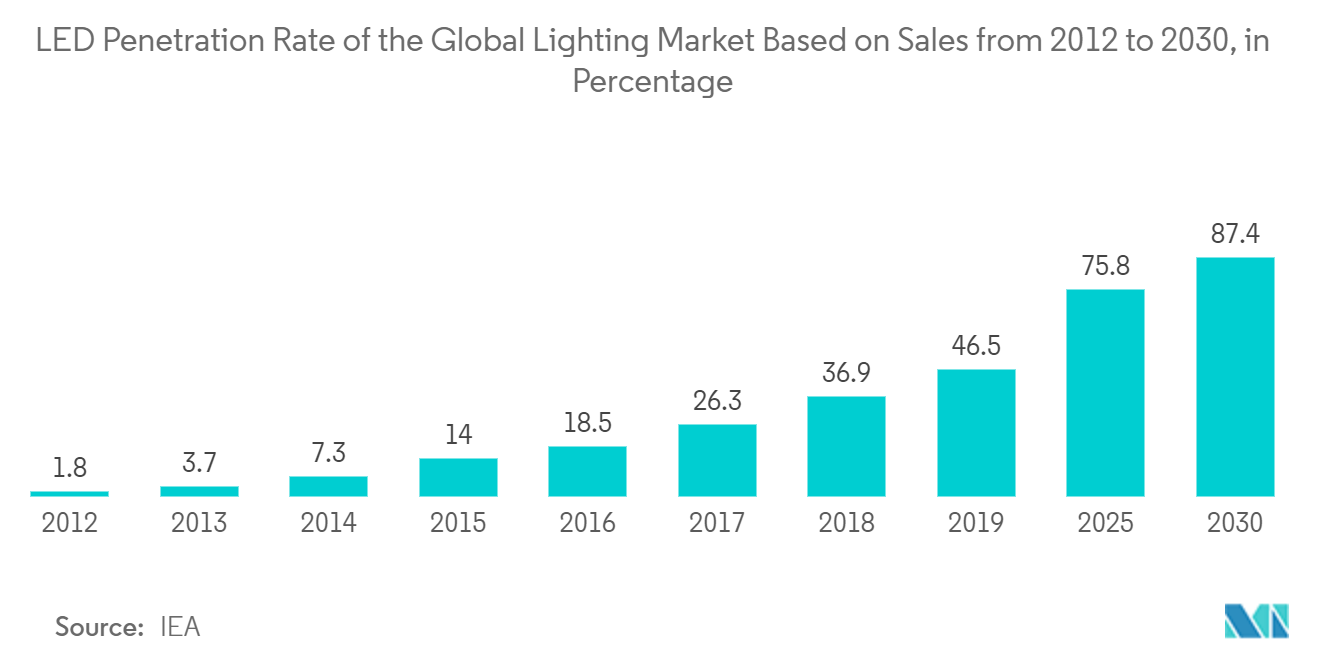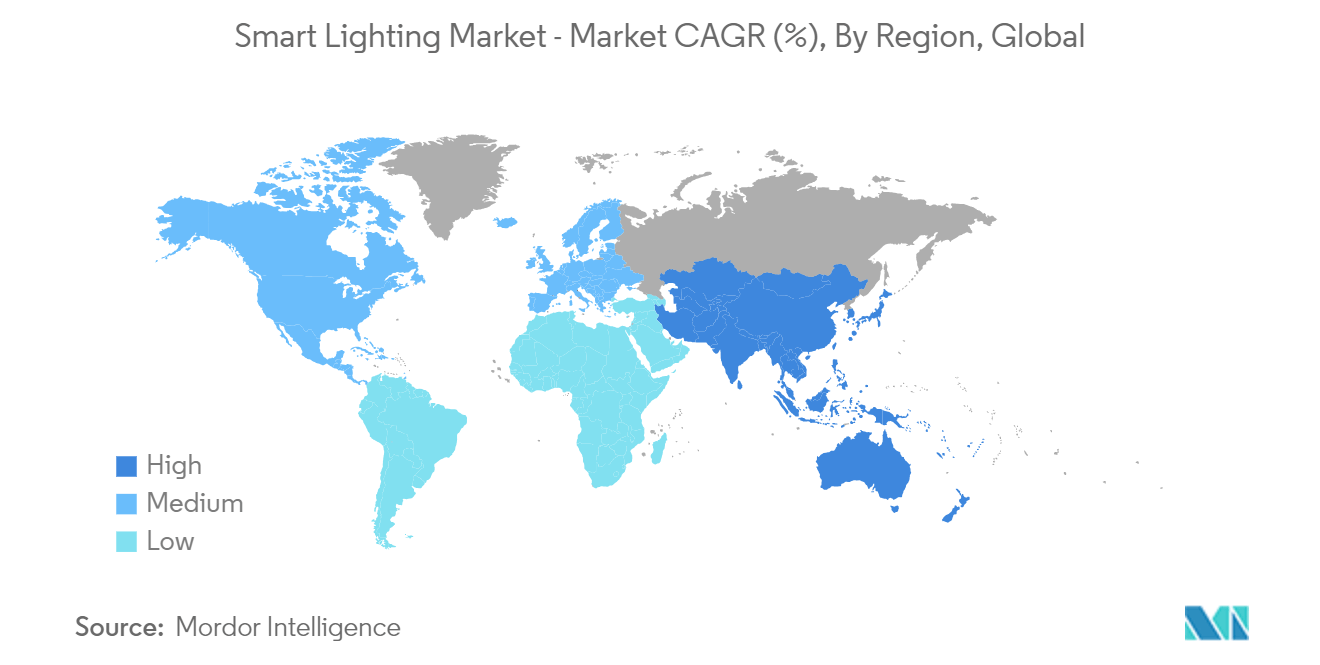Market Trends of Smart Lighting Industry
Government Regulations Mandating the Use of LEDs to Drive the Market
- Government regulations mandating the use of LEDs are boosting the market demand in several regions. For instance, in the United States, as the law mandates energy savings to be 45 lumens per watt for the most common types of light bulbs, a typical 60-watt incandescent light bulb puts out about 15 lumens per watt, a halogen incandescent bulb offers about 20 lumens per watt, CFL bulb offers 65 lumens per watt, and LEDs put out 80-100 lumens per watt with a fraction of energy. In addition, the price drop in LEDs has led to a further increase in smart lighting adoption.
- Through performance standards, labeling, and incentive programs, many governments worldwide are moving quickly to phase out inefficient light sources, as in Europe, where the switch to LED technology began more than 10 years ago. Recent updates to the Ecodesign Directive and the Restriction of Hazardous Substances Directive by the European Union will effectively phase out all fluorescent lighting by 2023. Further, in January 2023, the Government of Ukraine announced the approval of a program to replace incandescent light bulbs with light-emitting diode (LED) light bulbs. This initiative is part of the European Union's support of Ukraine's energy front.
- A regionally harmonized lighting standard has been adopted by 16 African nations that make up the Southern African Development Community (SADC). This standard's market will transition entirely to LED in the coming years. The East African Community (EAC) is also phasing out fluorescent lighting in six member nations. Other jurisdictions, including Southeast Asian nations, are implementing similar regulations. This is expected to drive the growth of the market studied.
- According to the US Department of Energy, widespread use of LED lighting is expected to impact energy savings in the US greatly. As a result, many lighting installations are expected to use LED technology, and energy savings from LED lighting could reach 569 TWh annually by 2035, equal to the annual energy output of approximately 92 1,000 MW power plants.

Asia-Pacific to Witness Fastest Growth
- The increasing adoption of the Internet of Things (IoT) is expected to brighten the development of the lighting market in China, thereby increasing the growth of connected smart lighting systems in the country. GSMA estimates that China may account for around 4.1 billion IoT connections, which is almost one-third of the worldwide IoT connections, by 2025. Smart lighting systems are expected to be the biggest beneficiary of the trend during the forecast period.
- The Japanese market has witnessed the launch of a series of smart home products tailored for them from global tech giants, such as Google and Amazon. Amid the gloom surrounding the reduced penetration rate of traditional home appliances Y-o-Y in the country, the smart home industry promises unlimited potential in the future, owing to the rising integration of AI-empowered products and services in homes.
- The market for smart lighting in the country is also driven by the increased adoption of smart devices, including smartphones, due to their ability to connect conveniently to IoT devices. Japan Smartphone Security Association (JSSEC) estimates that the number of smartphone users in the country may reach 68.8 million by 2022.
- The demand for smart lighting in India is expected to grow owing to the increasing demand for features such as voice recognition or remote operation and the exceptional experience of smart home automation. Rising adoption of LED lights in various sectors such as residential, healthcare, and commercial spaces like hotels and workspaces, as well as rising disposable income, are other factors that may drive the growth of these devices in the future.
- Under the Asia-Pacific region, other countries like South Korea, Thailand, Singapore, Malaysia, Sri Lanka, Bangladesh, Australia, Indonesia, etc., also have a high potential for gaining a considerable share in the smart lighting market.


